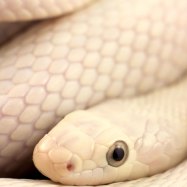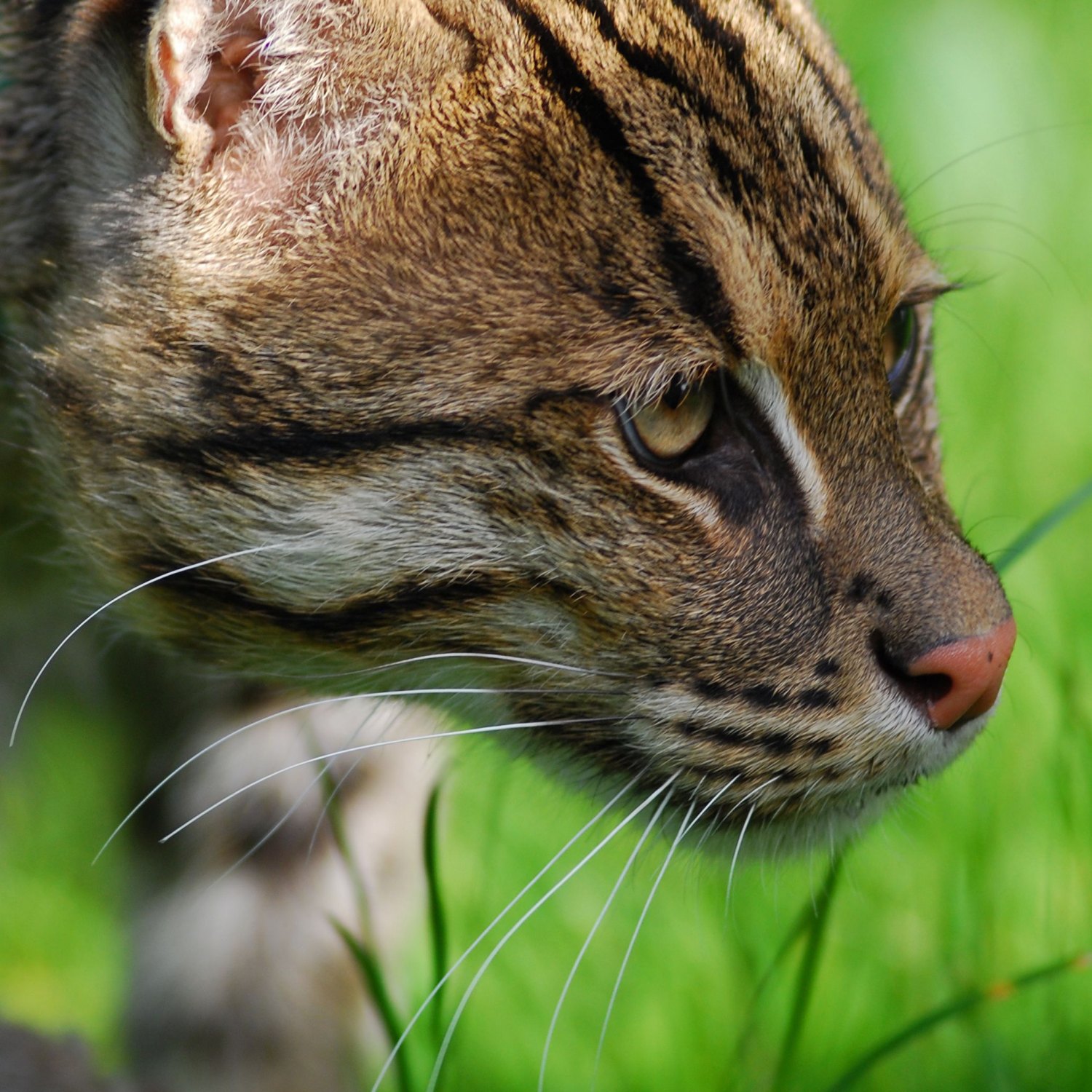
Fishing Cat
Around 2 to 3.3 feet (60-100 cm)
The Fishing Cat, found in 11 countries including India and Thailand, is a medium-sized feline with a robust build and short legs. They measure around 2 to 3.3 feet in length and belong to the Felidae family. These solitary hunters are known for their exceptional fishing skills and are excellent swimmers in their natural habitat. However, due to habitat loss and poaching, their population is declining, making them an endangered species. Let's raise awareness and protect these beautiful animals. #FishingCat #EndangeredSpecies #Conservation
Animal Details Summary:
Common Name: Fishing Cat
Kingdom: Animalia
Habitat: Wetlands, mangroves, rivers, and swamps
The Fascinating Fishing Cat: A Master of the Wetlands
Amidst the wild jungles and vast grasslands of Southeast Asia, there lies a unique and elusive feline species – the Fishing Cat. This mysterious and elusive creature, with its distinctive appearance and impressive hunting techniques, has captivated the attention of wildlife enthusiasts and researchers alike. With its scientific name Prionailurus viverrinus and commonly known as the Fishing Cat, this feline species is a remarkable addition to the diverse flora and fauna of Southeast Asia.The Kingdom
As with all living beings on Earth, the Fishing Cat belongs to the animal kingdom, scientifically known as Animalia Fishing Cat. This kingdom is characterized by organisms with the ability to move, reproduce, and respond to environmental stimuli.The Phylum
Within the animal kingdom, the Fishing Cat falls under the phylum Chordata, which includes all animals possessing a notochord – a flexible rod-like structure that provides support to the body. This phylum also includes species with a well-developed nervous system and complex organ systems.The Class and Order
Classified as a mammal, the Fishing Cat belongs to the class Mammalia, which is characterized by its warm-blooded nature, mammary glands for feeding offspring, and a four-chambered heart. Within this class, the Fishing Cat belongs to the order Carnivora, which includes carnivorous species such as cats, dogs, and bears.The Family
The Fishing Cat belongs to the Felidae family, which consists of all felids or cats. This includes big cats like tigers and lions, as well as smaller cats like house cats and lynxes.The Wetland Habitat
The Fishing Cat is a master of the wetlands, and its preferred habitat is wetlands, mangroves, rivers, and swamps. They are mostly found in dense and tropical areas, where there is an abundance of water sources Fire Salamander.These wetlands provide the perfect hunting ground for the Fishing Cat, with plenty of prey, including fish, birds, and rodents. They are also excellent swimmers and have adapted to their aquatic environment by developing webbed toes, allowing them to move swiftly and silently through water.
A Carnivorous Diet
As its name suggests, the Fishing Cat is a carnivorous predator and feeds primarily on fish. However, they are opportunistic hunters and will also prey on other animals found in their habitat, such as birds, rodents, and amphibians.Their hunting techniques are unique and impressive, making them one of the most skilled hunters in the animal kingdom. They are known to use their sharp claws to hook fish out of the water, and their keen eyesight allows them to spot prey, even in murky water.
Geographical Distribution and Origin
The Fishing Cat is native to Southeast Asia, with a geographical distribution that spans across 11 countries, including India, Bangladesh, Sri Lanka, Nepal, Cambodia, and Thailand. They are most commonly found in the wetlands of these countries, aided by the dense and tropical vegetation that provides them with ample opportunities for hunting and survival.Their country of origin is debated, with some sources claiming India, while others assert that it is Bangladesh. However, the Fishing Cat remains an important and revered species in all of these countries, significant to their biodiversity and cultural heritage.
The Magnificent Appearance
The Fishing Cat's appearance is truly remarkable and sets it apart from other feline species. Their fur ranges from olive-gray to grayish-brown, with distinct dark spots and bands, giving them a striking and unique coat pattern. This coloration serves as camouflage in their preferred wetland habitat, allowing them to blend in with their surroundings and remain unseen by potential predators.The Medium-Sized Feline
The Fishing Cat is a medium-sized feline with a robust built and short legs, standing at around 2 to 3.3 feet (60-100 cm) in length. Despite their short legs, they are powerful runners and can reach speeds of up to 30 miles per hour (48 km/h). They have strong, sturdy bodies, weighing between 18 to 26 pounds (8-12 kg), making them agile and flexible hunters.The Threats to Their Existence
Like many other animal species, the Fishing Cat is facing multiple threats that have led to a decline in their population. Habitat loss and fragmentation due to human activities such as deforestation, agricultural development, and urbanization are the primary threats to their survival.Additionally, illegal hunting and poaching for their fur, meat, and body parts, used in traditional medicine, have also taken a toll on their population. These factors, combined with the lack of protection and conservation efforts, pose a significant danger to the Fishing Cat's existence.
In Conclusion
The Fishing Cat is a truly remarkable and unique species, perfectly adapted to its wetland habitat. Its distinctive appearance and impressive hunting skills make it a fascinating addition to the diverse wildlife found in Southeast Asia. However, the threats to its existence cannot be ignored, and urgent measures must be taken to protect and conserve this magnificent feline species for the generations to come.

Fishing Cat
Animal Details Fishing Cat - Scientific Name: Prionailurus viverrinus
- Category: Animals F
- Scientific Name: Prionailurus viverrinus
- Common Name: Fishing Cat
- Kingdom: Animalia
- Phylum: Chordata
- Class: Mammalia
- Order: Carnivora
- Family: Felidae
- Habitat: Wetlands, mangroves, rivers, and swamps
- Feeding Method: Carnivorous
- Geographical Distribution: Southeast Asia
- Country of Origin: India, Bangladesh, Sri Lanka, Nepal, Cambodia, Thailand, and others
- Location: Presence in 11 countries including India, Bangladesh, Sri Lanka, Nepal, Cambodia, Thailand
- Animal Coloration: Olive-gray to grayish-brown with distinct dark spots and bands
- Body Shape: Medium-sized with a robust built and short legs
- Length: Around 2 to 3.3 feet (60-100 cm)
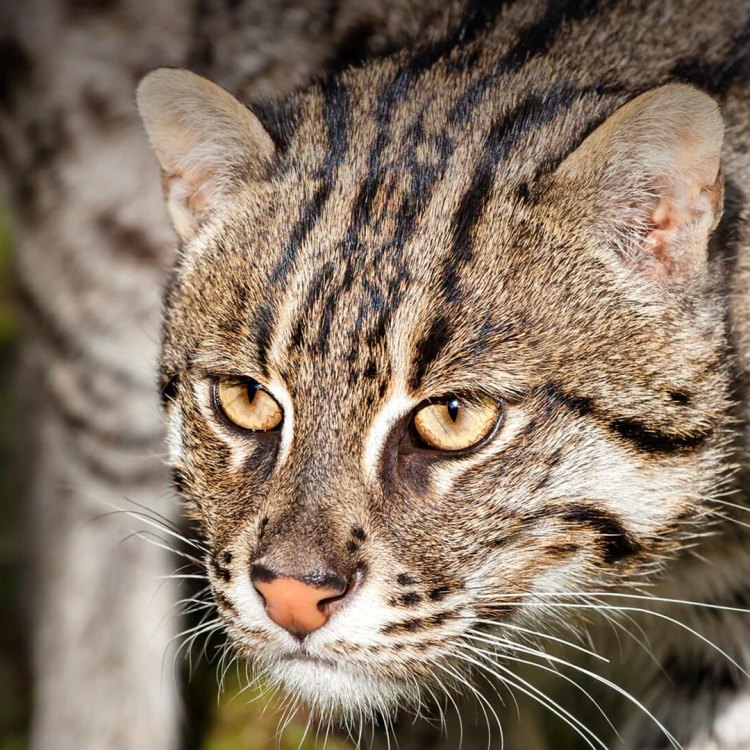
Fishing Cat
- Adult Size: Weight: 15 to 35 pounds (7-16 kg)
- Average Lifespan: Around 10 to 12 years
- Reproduction: Sexual
- Reproductive Behavior: Unknown
- Sound or Call: Unknown
- Migration Pattern: Non-migratory
- Social Groups: Solitary or live in small family groups
- Behavior: Excellent swimmer and primarily nocturnal
- Threats: Habitat loss, human-wildlife conflict, poaching for body parts, and pollution
- Conservation Status: Endangered
- Impact on Ecosystem: Important for maintaining the balance of fish populations in wetland ecosystems
- Human Use: Poaching for body parts, capture for the pet trade
- Distinctive Features: Webbed feet and short, stocky tail
- Interesting Facts: Fishing cats have been observed using a variety of fishing techniques, including diving into the water to catch fish, and scooping fish out of the water with their paws.
- Predator: No significant predators
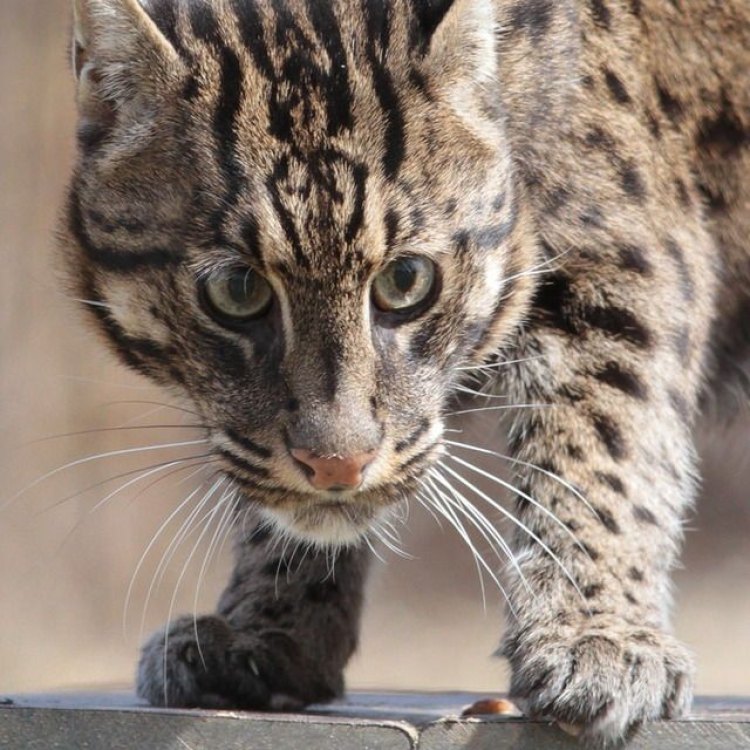
Prionailurus viverrinus
The Fishing Cat: An Endangered Feline with Unique Adaptations
In the vast world of felines, there is one species that stands out from the rest - the Fishing Cat. With its distinctive features and impressive hunting abilities, this elusive and endangered species has captured the attention of wildlife enthusiasts and researchers alike.The Fishing Cat, scientifically known as Prionailurus viverrinus, is a medium-sized wild cat that can be found in the wetlands of South and Southeast Asia. With a weight range of 15 to 35 pounds (7-16 kg) and an average lifespan of 10 to 12 years, these cats are relatively larger compared to other species in their genus PeaceOfAnimals.Com.
Their reproductive behavior is still largely unknown, but they are known to be sexual reproducers. However, researchers have observed that they tend to be solitary animals or live in small family groups. This behavior could be an adaptation to their preferred habitat, which is primarily wetlands and marshy areas.
One of the most distinctive features of the Fishing Cat is their excellent swimming abilities, which is uncommon among wild cats. Their partially webbed feet and short, stocky tails serve as adaptations for aquatic life, making them perfect for hunting in the water. They have also been observed to have a second set of transparent eyelids, which help them to see underwater.
These cats are primarily nocturnal, meaning they are most active at night. This behavior not only helps them avoid the heat of the day but also enables them to catch their favorite prey - fish. The Fishing Cat is a skilled and adaptive fisher, with a wide range of fishing techniques Fierce Snake. They have been observed diving into the water to catch fish or scooping them out with their powerful paws.
Their preferred prey is not limited to fish, as they are also known to hunt other small animals such as rodents, birds, reptiles, and even insects. This diverse diet makes them an essential part of the ecosystem, as they help maintain the balance of fish populations in wetland habitats.
However, despite their crucial role in the ecosystem, the Fishing Cat's population is declining at an alarming rate. This is due to various threats, including habitat loss, human-wildlife conflict, poaching for body parts, and pollution. The destruction of wetlands for agricultural and urban development has significantly reduced their primary habitat, leading to a decline in their population.
Human-wildlife conflict is also a significant issue for the Fishing Cat. They often come into conflict with local fishermen, who consider them a nuisance as they compete for the same fish resources. In some instances, these cats are killed in retaliation, further adding to their declining numbers.
Moreover, poaching for their body parts and the capture for the pet trade are also major threats to the Fishing Cat's survival. The demand for exotic pets drives the illegal trade of these cats, which not only harms the individual animals but also disrupts their population and genetic diversity.
Due to these various threats, the Fishing Cat is now listed as an endangered species on the International Union for Conservation of Nature (IUCN) Red List of Threatened Species. This classification indicates that without significant conservation efforts, this species could soon face extinction.
Efforts are being made to protect and conserve the remaining population of Fishing Cats. Conservation initiatives include the establishment of protected areas, such as the Chalakudy-Pampadumshola and Sathyamangalam Tiger Reserves in India, where these cats are found. These reserves not only provide a safe habitat for the Fishing Cat but also help regulate human activities, reducing the impact of human-wildlife conflict.
There are also efforts to raise awareness about the importance of conserving these unique and endangered cats. Local communities are being educated about the benefits of co-existing with these animals, and alternative livelihood options are being explored to reduce the reliance on the wetlands for resources.
The Fishing Cat also has a significant impact on the ecosystem, making their conservation crucial for the balance of wetland habitats. By controlling fish populations, they prevent overfishing, which can have devastating effects on the entire ecosystem.
In conclusion, the Fishing Cat is a fascinating and unique species that deserves our attention and protection. With their impressive adaptations for aquatic life and essential role in the ecosystem, they are truly a remarkable feline. However, their future is at risk, and urgent conservation efforts are needed to ensure their survival. As responsible members of the planet, it is our duty to take action and protect this endangered species for future generations to witness and admire.
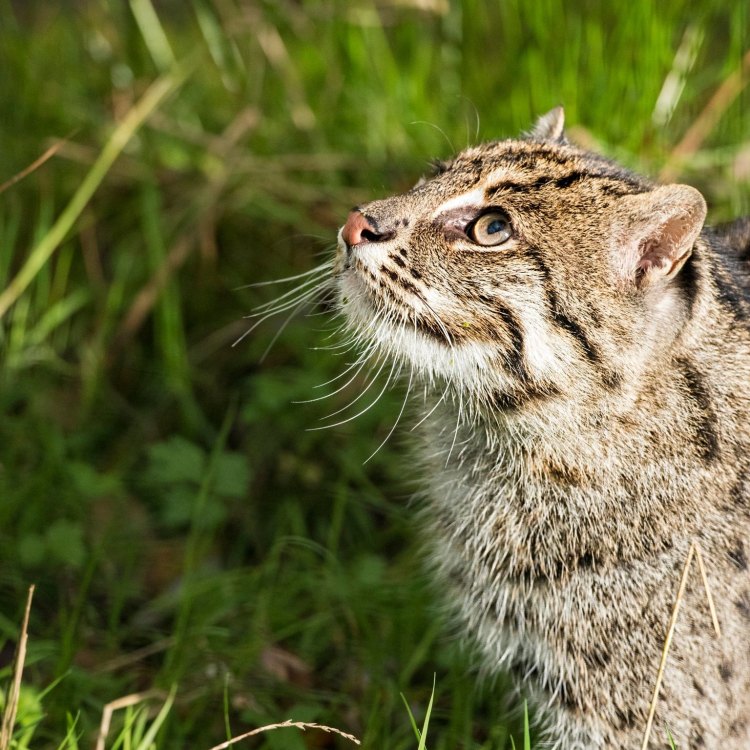
The Fascinating Fishing Cat: A Master of the Wetlands
Disclaimer: The content provided is for informational purposes only. We cannot guarantee the accuracy of the information on this page 100%. All information provided here may change without prior notice.







